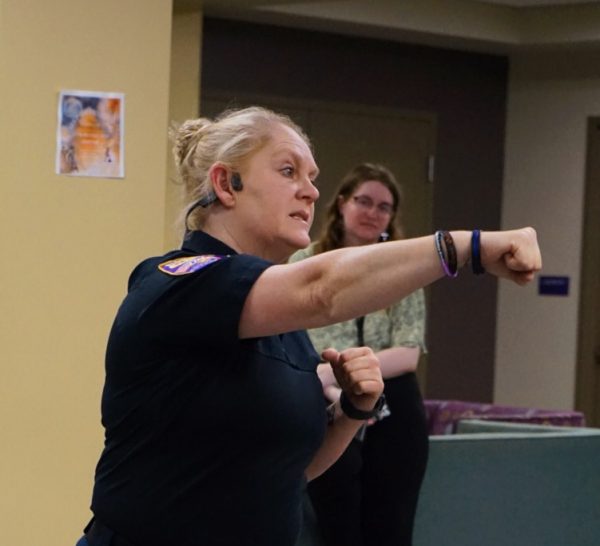SGA passes annual test
October 15, 2016
Each year, the Student Government Association’s officers and senators are put to the test.
But this time around, the test was more difficult.
Officers and senators are graded on how well they know the SGA constitution, parliamentary procedures, meeting guidelines and the Code of Laws.
Without thorough knowledge of the above subjects, senate wastes time and resources, said rules committee Chair and senior Caleb Lewis.
“In the past, (the senate) passed bills, and then later somebody figured out, ‘Oh wait, this was against the Code of Laws,’” he said
So, this year, the test was more difficult to prevent mistakes like passing an impassable bill, Lewis said.
Last year, the test was easy, and differences on this year’s test included adding more questions as well as fill-in-the-blank questions, Lewis said.
SGA President Sarah Green said this is her third year taking the test, and in previous tests, there were about 10 questions and most of them were multiple choice.
Although the yearly challenge was harder, each officer and senator passed.
The rules committee is tasked with creating, administering and taking the test, and everyone must score at least a 60 percent to pass.
Making the test more difficult is beneficial to SGA, Lewis said.
“(The rules committee) want(s) to make SGA run as effectively as possible for the student body,” Lewis said. “The way you make SGA run as effectively as possible is to make sure everyone knows the constitution and the code of laws and parliamentary procedures.”
If someone fails the test, they are eligible to retake it upon two thirds approval of the senate, according to the Code of Laws.
The committee tried and failed to pass a bill increasing the percentages required to pass the test.
This year’s test also exposed a problem within SGA, Lewis said.
Since SGA lacks a judicial branch, the rules committee must also take the test they created, Lewis said.
“It gets to a grey issue where, ‘Well is it fair that the people who make the test take the test?’” Green said. “But the Code of Laws says they have to make the test, and no one else can make the test, and no one else can grade it.”
This is an issue with how SGA is structured, Lewis said.
“A few years ago, (SGA) abolished the judicial branch, and so, it says in the constitution that, ‘All judicial powers shall be vested in the rules committee,’” Lewis said. “It’s like in the United States government—executive, legislative and judicial check each other. With us, our judicial is embedded in the legislative.”
Green said she is considering trying to bring back a judicial branch.
“Right now, several senators are doing research on getting the judicial branch back,” she said.
In order to bring back a judicial branch, 764 or 10 percent of students would have to give their signed approval to make an amendment to the SGA constitution. Once signatures are gathered, the amendment will be posted for the rest of the student body to vote on, Green said.
If the majority of students vote for a judicial branch, then it would have to be effective within one academic year, Green said.
Although the test pointed out the difficulty of not having a judicial branch, it was beneficial, Green said.
“No one ever likes tests, but it was good for a Code of Laws test,” Green said. “It was more difficult than the ones that I’ve taken in the past, but I don’t think that’s a bad thing. You had to know the information. It really tested you on the things you would need to know as a senator.”
It is important for SGA senators and officers to know their own rules because SGA will not run properly if they do not, said sophomore Lauren Garrett.
The test also helps familiarize senators with the latest bylaws, said senator and sophomore Kacey Womack.
“The test is very necessary because we have so many bylaws that we abide by as well as a constitution for our senate,” Womack said. “So since we work to update these things where we see fit, the test is necessary so that our senators know what we’re representing.”











